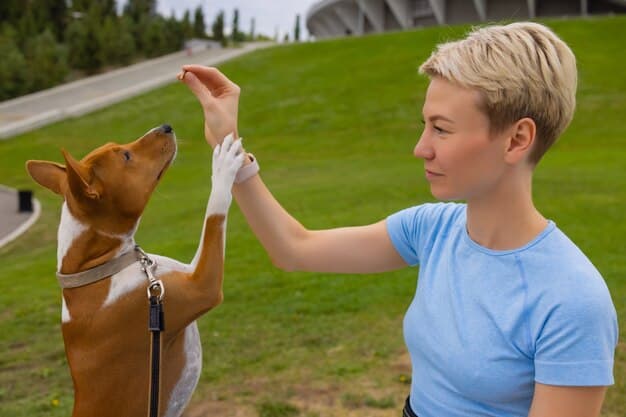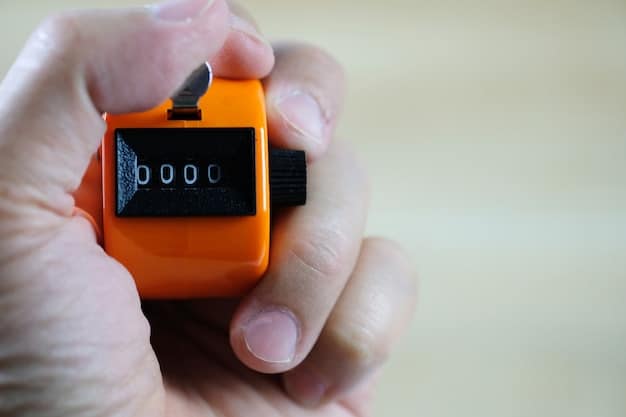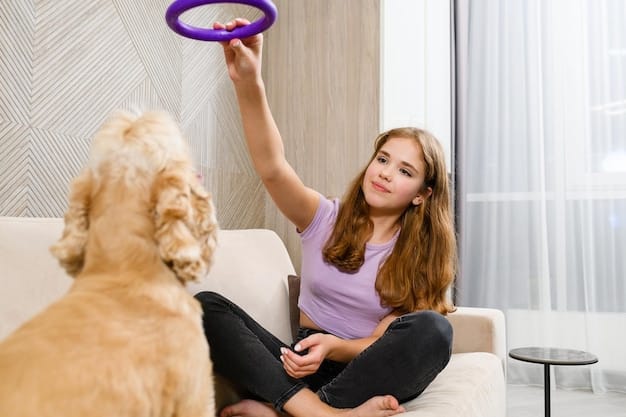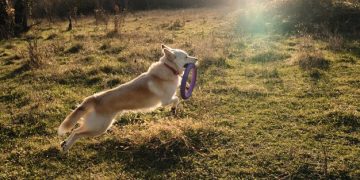Clicker Training Mastery: Unlock Advanced Commands

Anúncios
Clicker training mastery involves using a clicker device to mark desired behaviors in pets, followed by a reward, to effectively communicate and shape their actions into advanced commands, enhancing training precision and strengthening the bond between pet and owner.
Unlock the full potential of your pet’s learning abilities with clicker training mastery. This guide provides a step-by-step approach to move beyond basic commands and achieve advanced obedience through positive reinforcement.
Anúncios
Understanding the Fundamentals of Clicker Training
Before diving into advanced commands, it’s crucial to establish a solid foundation in the basics of clicker training. This involves understanding what a clicker is, how it works, and why it’s such an effective tool for animal training. Consistency and timing are key to building a strong association between the click, the desired behavior, and the reward.
What is Clicker Training?
Clicker training is a positive reinforcement method based on operant conditioning. The clicker acts as an event marker, precisely pinpointing the exact moment your pet performs the desired behavior. This clear communication helps your pet understand what they did right and encourages them to repeat the action.
Anúncios
Why Use a Clicker?
The consistent sound of the clicker is far more distinct and reliable than verbal praise. It bridges the communication gap, ensuring your furry friend understands exactly when they’ve earned a reward. This accuracy is vital for teaching complex behaviors and advanced commands.

The benefits of using a clicker extend beyond simple obedience. It fosters a positive and engaging training environment, strengthens the bond between you and your pet, and empowers your pet to learn and problem-solve. Here are key aspects to consider during the training process:
- Clear Communication: The clicker’s consistent sound provides unambiguous feedback to your pet.
- Positive Reinforcement: Focus on rewarding desired behaviors rather than punishing unwanted ones.
- Engagement: Training becomes a fun and interactive experience for both you and your pet.
Mastering the fundamentals sets the stage for more complex training endeavors. By establishing a clear understanding of the clicker’s purpose and its role in effective communication, you can build a strong foundation for teaching advanced commands.
Setting the Stage for Advanced Commands
Once your pet understands the basic association between the clicker and the reward, it’s time to progress to more complex behaviors. This transition requires careful planning and a strategic approach to ensure your pet remains engaged and motivated. Start by breaking down complex behaviors into smaller, manageable steps, and focus on shaping desired actions gradually.
Prerequisites for Advanced Training
Before embarking on advanced clicker training, ensure your pet has mastered basic commands such as “sit,” “stay,” and “come.” A solid understanding of these foundational commands is essential for building upon their existing knowledge and successfully introducing more complex behaviors.
Creating the Right Environment
Choose a quiet, distraction-free environment for your training sessions. Minimize potential interruptions and ensure your pet is focused on you and the training process. Consistency in the training location can also help your pet associate the space with positive learning experiences.
As you begin to introduce advanced commands, consider these important factors:
- Short Sessions: Keep training sessions brief and engaging, typically lasting no more than 10-15 minutes.
- High-Value Rewards: Use treats or toys that your pet finds highly motivating to reinforce desired behaviors.
- Patience: Remember that learning takes time, so be patient and celebrate small victories along the way.

By carefully preparing your pet and the training environment, you can set the stage for successful advanced command training. Building on existing knowledge, creating a focused setting, and using positive reinforcement techniques will help you guide your pet toward mastering more complex behaviors.
Shaping: Sculpting Complex Behaviors
Shaping is a crucial technique in advanced clicker training, allowing you to teach complex behaviors by rewarding successive approximations of the desired action. This method involves breaking down the behavior into smaller steps and reinforcing each step until your pet gradually achieves the complete action. Shaping requires patience and keen observation to identify and reward even the smallest progress.
Understanding Successive Approximations
Successive approximations involve rewarding your pet for any behavior that moves them closer to the final desired action. For example, when teaching a dog to “fetch,” you might start by rewarding them for simply looking at the object, then for approaching it, and finally for picking it up.
Tips for Effective Shaping
To maximize the effectiveness of shaping, start with a clear end goal in mind and break it down into manageable steps. Reward each step consistently and gradually increase the criteria for reinforcement as your pet progresses. Be patient and willing to adjust your approach based on your pet’s learning style.
Consider the following for shaping complex behaviors:
- Start Simple: Begin with a basic movement or action that your pet can easily perform.
- Be Observant: Watch your pet closely to identify even the smallest improvements.
- Adjust Criteria: Gradually increase the difficulty of the behavior as your pet becomes more proficient.
Mastering the art of shaping unlocks a world of possibilities in clicker training. By breaking down complex behaviors into smaller, manageable steps and rewarding successive approximations, you can effectively teach your pet to perform intricate and impressive actions.
Luring: Guiding Your Pet with Precision
Luring is another powerful technique used in clicker training to guide your pet into specific positions or to perform certain actions. This method involves using a treat or toy to entice your pet to follow your hand, enabling you to shape their movements and teach them new commands with precision. Luring can be particularly useful for teaching behaviors that require precise body positioning.
How to Use Luring Effectively
Hold a treat or toy close to your pet’s nose and use it to guide them into the desired position. As they follow the lure, click the clicker at the exact moment they achieve the correct form. Gradually fade the lure by using it less and less until your pet can perform the behavior without any guidance.
Common Luring Mistakes to Avoid
Avoid holding the lure too high or too far away from your pet, as this can cause them to become frustrated or distracted. Also, be sure to reward your pet immediately after they perform the desired behavior to reinforce the association between the action and the clicker.
When using luring in clicker training, keep the following points in mind:
- Keep it Close: Hold the lure close to your pet’s nose to maintain their focus.
- Be Gradual: Slowly fade the lure as your pet becomes more proficient.
- Reward Promptly: Click and reward immediately after your pet performs the correct behavior.
Luring is an excellent technique for teaching precise movements and positions in clicker training. By using a treat or toy to guide your pet, you can effectively shape their actions and help them learn new commands with accuracy and ease.
Adding Duration, Distance, and Distraction
Once your pet consistently performs advanced commands in a controlled environment, it’s time to increase the difficulty by adding duration, distance, and distractions. This process is critical for generalizing learned behaviors and ensuring your pet can perform reliably in various real-world situations. Gradually introduce these challenges to keep your pet engaged and motivated.
Increasing Duration
Start by gradually increasing the amount of time your pet holds a position, such as “stay.” Begin with short intervals and gradually extend the duration as your pet becomes more comfortable. Use the clicker to reinforce their sustained effort and reward them for maintaining the position over longer periods.
Adding Distance
After your pet can consistently perform commands up close, begin to increase the distance between you and your pet. Start with small increments and gradually increase the distance as they become more proficient. Use the clicker to reward them for following your commands from a distance.
Introducing Distractions
Once your pet can perform commands reliably with duration and distance, introduce distractions to test their focus and resilience. Start with low-level distractions and gradually increase the intensity as they become more confident. Reward them for maintaining their focus despite the distractions.
To master generalization with duration, distance, and distractions, remember:
- Be Gradual: Introduce challenges slowly and incrementally.
- Positive Reinforcement: Reward your pet for maintaining focus and performing commands accurately.
- Consistency: Practice regularly in various environments to reinforce learned behaviors.
Adding duration, distance, and distractions is essential for ensuring your pet can perform advanced commands reliably in real-world situations. By gradually increasing these challenges and using positive reinforcement techniques, you can help your pet generalize their learned behaviors and become a well-behaved companion in any environment.
Troubleshooting Common Clicker Training Challenges
Even with the best preparation and techniques, you may encounter challenges during clicker training. Understanding how to troubleshoot common issues can help you overcome obstacles and continue progressing toward your training goals. Patience, flexibility, and a positive attitude are essential for resolving these challenges.
Addressing Lack of Motivation
If your pet seems unmotivated, consider whether your rewards are appealing enough. Experiment with different treats or toys until you find something that sparks their interest. Also, ensure your training sessions are fun and engaging to maintain their motivation.
Dealing with Distractions
If your pet is easily distracted, try moving your training sessions to a quieter environment with fewer interruptions. You can also gradually introduce distractions to help them learn to focus despite external stimuli. Reward them for maintaining their focus and ignoring distractions.
Overcoming Plateaus
If your pet reaches a plateau in their training, it may be time to re-evaluate your approach. Break down the behavior into smaller steps, try a different luring or shaping technique, or introduce a new challenge to reinvigorate their learning progress.
When troubleshooting common clicker training challenges, consider:
- Reward Variety: Experiment with different rewards to maintain your pet’s interest.
- Environment Control: Minimize distractions by choosing a quiet training environment.
- Technique Adaptation: Be flexible and willing to adjust your approach as needed.
By addressing these common challenges with patience, creativity, and positive reinforcement, you can overcome obstacles and continue to progress toward your training goals. Remember that every pet learns at their own pace, so celebrate small victories and enjoy the journey.
| Key Point | Brief Description |
|---|---|
| 🎯 Clicker Fundamentals | Master the basics of clicker use and timing. |
| 🐾 Shaping Techniques | Reward successive approximations for complex tasks. |
| 🦴 Luring Methods | Guide your pet using treats or toys effectively. |
| distractions | Increase difficulty by adding duration, distance, and distractions. |
Frequently Asked Questions
▼
Clicker training is a positive reinforcement method that uses a clicker to mark desired behaviors. When the pet performs the correct action, you click and immediately reward them, creating a positive association.
▼
Begin by introducing the clicker sound and pairing it with a treat. Once your pet associates the click with something positive, start using it to mark simple behaviors like sitting or staying.
▼
Advanced commands include fetching specific items, performing complex tricks like rolling over or playing dead, and navigating agility courses. The possibilities depend on your pet’s aptitude and your creativity.
▼
While commonly used with dogs, clicker training can be effective for various animals, including cats, horses, and even birds. The key is adapting the rewards and techniques to suit the animal’s specific needs.
▼
If you hit a plateau, reassess your approach. Break down the command into smaller steps, increase the value of the rewards, or take a break and revisit the training later. Consistency and patience are crucial.
Conclusion
Mastering clicker training opens up a world of possibilities for enhancing your pet’s skills and strengthening your bond. By understanding the fundamentals, setting the stage for advanced commands, and employing techniques like shaping and luring, you can unlock your pet’s full potential. Remember that consistency, patience, and positive reinforcement are key to success. Happy training!






